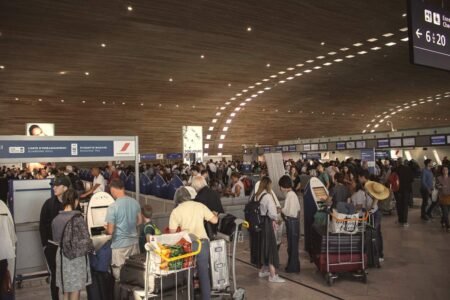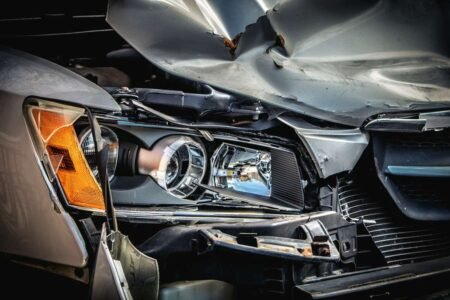The European Commission adopted a comprehensive strategy (Transport 2050) for a competitive transport system that will increase mobility, remove major barriers in key areas and fuel growth and employment. At the same time, the proposals will dramatically reduce Europe’s dependence on imported oil and cut carbon emissions in transport by 60% by 2050.
Advertisement
Why it matters
Transport is fundamental to our economy and society. Mobility is vital for growth and job creation. The transport industry directly employs around 10 million people and accounts for about 5% of gross domestic product (GDP). Effective transport systems are key to European companies’ ability to compete in the world economy. Logistics, such as transport and storage, account for 1015% of the cost of a finished product for European companies. The quality of transport services has a major impact on people’s quality of life. On average 13.2% of every household’s budget is spent on transport goods and services.
The major challenges
Mobility will increase. But European transport is at a crossroads. Our transport system faces major challenges:
– Oil will become scarcer in future decades, sourced increasingly from unstable parts of the world. Oil prices are projected to more than double between 2005 levels and 2050 (59 $/barrel in 2005). Current events show the extreme volatility of oil prices.
– Transport has become more energy-efficient but still depends on oil for 96% of its energy needs.
– Congestion costs Europe about 1% of gross domestic product (GDP) each year.
– There is the need to drastically reduce world greenhouse gas emissions, with the goal of limiting climate change to 2ºC. Overall, by 2050, the EU needs to reduce emissions by 8095% below 1990 levels in order to reach this goal.
– Congestion, both on the roads and in the sky, is a major concern. Freight transport activity is projected to increase, with respect to 2005, by around 40% in 2030 and by little over 80% by 2050. Passenger traffic would grow slightly less than freight transport: 34% by 2030 and 51% by 2050.
– Infrastructure is unequally developed in the eastern and western parts of the EU. In the new Member States there are currently only around 4 800 km of motorways and no purpose-built high-speed rail lines; the conventional railway lines are often in poor condition.
– The EU’s transport sector faces growing competition in fast developing world transport markets.
For a comprehensive view of key statistics on transport see: Transport 2050: 50 facts and figures
Transport 2050: The main measures
The strategy outlined in the Transport 2050 Roadmap to a Single Transport Area aims to introduce profound structural changes to transform the transport sector.
It will move forwards in coming years (201114) with key measures:
– A major overhaul of the regulatory framework for rail (rail package 2012/2013). At the heart of the Transport 2050 roadmap is the need for a transformation in the rail sector so that it becomes more attractive and succeeds in carrying a very significantly increased share of the market for passenger and freight over middle distances (>300 km) by 2050. At the same time the aim is to triple the length of the current high-speed rail network by 2030. All this will require major changes to the regulatory framework for rail including: opening the market for domestic passenger services; introducing single management structures for rail freight corridors; a structural separation of infrastructure managers and service providers; improvements in the regulatory environment to make rail more attractive for private sector investment. The Commission will bring forward an ambitious package of legislative initiatives for the rail sector in 2012/2013.
– A core network of strategic infrastructure is essential for the creation of a real Single European Transport Area. The Commission will bring forward new proposals for a core European “multi-modal” network in 2011 with publication of TEN-T (trans-European transport network) guidelines, maps and financing proposals. The EU will provide funding through a single framework to use coherently money in TEN-T, cohesion and structural funds. Conditionality of funding will ensure focus on EU priorities and adoption of new technologies (recharging/refuelling stations for new vehicles, new traffic management technology).
– To create a fully functioning multi-modal transport system requires removing bottlenecks and barriers in other parts of the network, namely with an airport package to improve the efficiency and capacity of airports (2011), a communication on inland waterway transport (2011) to remove barriers and improve efficiency inland waterways, as well as the e-maritime initiative (2011) for paperless and intelligent shipping as part of the drive to create a real “Blue Belt” area, without barriers, for shipping. The Commission will also work to remove restrictions to road cabotage (2012/2013).
– To create a fair financial environment: a new approach to transport charges. Transport charges must be restructured in the direction of a wider application of the “polluter pays” and “user pays” principle. Key measure for the coming years will include:
– Publication of guidelines for the application of infrastructure costs to passenger cars (2012). As a second stage, a proposal setting a framework for the internalisation of costs to all road vehicles (except those covered by Eurovignette) to cover the costs of infrastructure as well as the social costs of congestion, CO2 (if not included in fuel tax) local pollution, noise and accidents. Member States will be free to apply these charges, but those that decide to go ahead will be able to do so within a common EU framework.
– Proceed with the internalisation of external costs in other transport modes.
– To ensure stable financing for transport, apply the principle of earmarking revenues collected from transport users for the development of an integrated and efficient network (i.e. a proportion of charges from transport must be re-invested in transport to provide the necessary funding for high-quality transport infrastructure).
– Progressively allow for European electronic tolling systems, e.g. a European electronic toll service for lorries will become available as from October 2012, and two years later for all kinds of vehicles, ensuring that drivers can pay different tolls for the use of motorways electronically and through a single service provider for the whole of Europe. This could replace many different systems that are currently used by 21 Member States who apply road charging. The principle is the same as for mobile phones the charge goes back to your national operator/authorities from wherever you are in Europe. And with electronic tolling the charges can easily be adjusted to varying conditions (peak times, more polluting vehicles, etc.).
– An EU Strategic Transport Technology Plan (2011). Research and the effective deployment of new technologies will be key to lower transport emissions in the EU as in the rest of the world, for cities, intra-urban and long-distance transport. In 2011, the Strategic Transport Technology Plan (STTP) will be a major initiative to regroup/refocus transport research and development efforts in Europe.
– The priority will be on producing clean, safe, quiet vehicles for all transport modes, from road vehicles to ships, barges, rolling stock and aircraft. Key areas will include: alternative fuels, new materials, new propulsion systems and the IT and traffic management tools to manage and integrate complex transport systems. The STTP will set out where we want to focus the research money; what should be the deployment strategy to incentivise/ensure uptake of new technologies in the market; how to provide the necessary EU standards to ensure coherent uptake across Europe.
– As part of the overall STTP, the Commission will publish a clean transport systems strategy in 2012, with more details on specific measures to incentivise and facilitate the introduction of clean vehicles and on developing EU wide standards for deployment of clean vehicles e.g. rules on the interoperability of charging infrastructure, guidelines and standards for refuelling infrastructure.
– A three-part strategy for transport in cities. A key part of the Transport 2050 strategy is to move towards the goal of phasing out conventionally fuelled cars in cities by 2050 with a shift to electric cars, hydrogen cars, hybrid cars, to public transport, and to walking or cycling in cities. Much of the responsibility for transport in cities remains with Member States and it is for individual cities to decide on the appropriate transport mix for their area. However, to facilitate the shift to cleaner transport in cities, the Commission will:
– Introduce procedures and financial assistance for urban mobility audits and urban mobility plans, on a voluntary basis. Examine the possibilities for regional and cohesion funds to be linked to cities and regions which have submitted urban mobility plans.
– The Commission will bring forward proposals for an EU framework for urban road user charging and access restriction schemes, for the increasing number of Member States who want to use charging schemes to alleviate congestion and shift transport patterns in cities. This will ensure that the different schemes operate within a coherent EU-wide framework, and are non-discriminatory.
– For technological solutions for clean cars, no city can act alone. Here, the EU will focus EU research efforts, introduce EU-wide deployment strategies and the right market conditions to facilitate the take-up of new cleaner vehicles in cities the transition to clean passenger cars is a major priority for the Strategic Transport Technology Plan (2011).
– For long-distance modes, where air travel and maritime transport will remain dominant, the focus will be to increase competitiveness and reduce emissions through:
– A complete modernisation of Europe’s air traffic control system by 2020 (SESAR1), delivering a Single European Sky with shorter and safer air journeys and more capacity. In a first step, Functional Airspace Blocks (FABs) are in the process of being created by end-2012 through cooperation of Member States. The Single European Sky will deliver a 10% reduction in air journeys with a significant reduction in fuel used and emissions.
– Similar major improvements in traffic management are key to the overall improvements in efficiency and lower emissions in all modes. That means the deployment of advanced land and waterborne transport management systems (e.g. ERTMS, ITS, RIS, Safeseanet and LRIT2).
– Other key measures for aviation and maritime will include: the introduction of cleaner engines, design and shift to sustainable fuels (see STTP); the completion of the European Common Aviation Area of 58 countries and 1 billion inhabitants by 2020; as well as work with international partners and in international organisations such as ICAO (International Civil Aviation Organisation) and IMO (International Maritime Organisation) to promote European competitiveness and climate goals at a global level.
– For maritime, in particular, the target of reducing emissions by at least 40% from bunker fuels can be met by operational measures, technical measures, including new vessel design, and low-carbon fuels. Given the global nature of shipping, these measures need to be worked on in the international context of the IMO to be effective.
– A major push towards multi-modal travel planning and integrated ticketing. A Single European Transport Area depends on effective and interoperable Europe-wide systems for multi-modal travel planning and integrated ticketing.
– In the short term, there will be a push to move ahead with the necessary EU measures to facilitate multi-modal integrated travel planning starting with the key standards necessary to facilitate EU-wide rail travel planning (2012), as well as necessary legislative measures to ensure service providers have access to real time travel and traffic information.
High-quality transport services in all sectors depend on the consolidation and enforcement of passenger rights legislation across all modes. Following the completion of the legislative framework for passenger rights in all modes, the Commission will publish reports on the application of air passenger rights, and later in 2011 bring forward guidelines on the common interpretation of passenger rights across all modes.
The above list is not exhaustive, it aims to highlight some of the key measures which will move forwards in the period 201114 to introduce the major structural changes necessary to build an integrated Single European Transport Area.
Full list of initiatives foreseen in the Transport 2050 roadmap - in over 40 areas of road, rail, air, maritime and inland waterway transport
1 : Single European Sky ATM Research
2 : European Rail Traffic Management System, Intelligent Transport Systems (for road transport), River Information Services, the EU’s maritime information systems SafeSeaNet and Long Range Identification and Tracking of vessels.
Source: European Commission







